
- Home
- Travel Packages
- Top Destination
-
Travel Attraction
By Category
Top Attraction
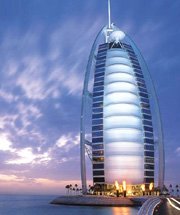
- Travel Agents
- Car Rentals
- Hotels
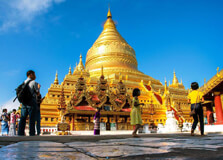
The Shwezigon Pagoda, located in Bagan, Myanmar, was built during the reign of King Anawrahta in the 11th century. It was originally intended to enshrine a bone and tooth relic of Gautama Buddha, making it a significant pilgrimage site for Buddhists. Architecture and Design The pagoda's design is a traditional Burmese bell shape, with a gold-plated stupa that shines brightly in the sunlight. The pagoda is surrounded by smaller stupas, shrines, and prayer halls, all adorned with intricate carvings and sculptures. Best Time to Visit The best time to visit Shwezigon Pagoda is during the cooler months of November to February when the weather is more comfortable for exploring the site. Additionally, visiting early in the morning or late in the evening provides a magical experience as the pagoda is bathed in the soft light of sunrise or sunset. Cultural Significance Shwezigon Pagoda is considered one of the holiest sites in Myanmar, attracting pilgrims and visitors from all over the country. The pagoda plays an important role in local festivals and ceremonies, symbolizing the unity of the Burmese people and their devotion to Buddhism. Pilgrimage Practices Pilgrims visiting Shwezigon Pagoda often perform circumambulation, walking around the pagoda in a clockwise direction while chanting prayers and making offerings. This practice is believed to bring blessings and merit to the devotee. Dress Code and Etiquette Visitors to Shwezigon Pagoda are expected to dress modestly, covering their shoulders and knees out of respect for the sacred site. It is also customary to remove shoes before entering the pagoda grounds and to avoid pointing feet towards the pagoda or Buddha images. Activities and Experiences Visitors to Shwezigon Pagoda can participate in meditation sessions, join in on chanting ceremonies, and explore the surrounding grounds filled with ancient ruins and lush gardens. It is also common to witness traditional alms-giving ceremonies to monks at the pagoda. Art and Religious Symbols The pagoda is adorned with intricate carvings, statues, and paintings depicting scenes from Buddhist mythology and teachings. The use of gold leaf and precious stones in the decoration symbolizes the wealth and devotion of the Burmese people towards their faith. Local Insights Locals believe that paying homage to Shwezigon Pagoda can bring luck, prosperity, and protection from harm. Many Burmese families make regular visits to the pagoda to offer prayers and make merit, reinforcing their connection to their cultural and religious heritage.
Explore More
The Kaba Aye Pagoda, also known as the World Peace Pagoda, was built in 1952 to commemorate the 6th Buddhist council, which took place in Yangon. The pagoda was constructed to hold the Sixth Buddhist Synod which lasted for two years from 1954 to 1956. It is a significant religious site for Buddhists in Myanmar and an important pilgrimage destination. Architecture and Design The Kaba Aye Pagoda features a unique design with a traditional Burmese architecture style. The pagoda is surrounded by a stunning garden filled with lush greenery and serene ponds. The main stupa is adorned with intricate carvings and gold-leaf decorations, giving it a majestic appearance. The pagoda's architecture reflects the rich cultural heritage of Myanmar and is a testament to the country's devotion to Buddhism. Best Time to Visit The best time to visit the Kaba Aye Pagoda is during the early morning or late afternoon when the weather is cooler and the light is perfect for photography. The pagoda is less crowded during these times, allowing visitors to enjoy a peaceful and spiritual experience. Cultural Significance The Kaba Aye Pagoda is considered a symbol of peace and harmony in Myanmar. It is believed that visiting the pagoda and paying homage to the Buddha can bring blessings and good fortune to devotees. The pagoda is also a place for meditation and reflection, offering a tranquil space for spiritual growth and enlightenment. Pilgrimage Practices Many Buddhists from Myanmar and around the world make pilgrimages to the Kaba Aye Pagoda to pay their respects and offer prayers. Devotees often walk around the pagoda in a clockwise direction, chanting prayers and making offerings at the shrines. Pilgrims may also meditate or participate in religious ceremonies held at the pagoda. Dress Code and Etiquette Visitors to the Kaba Aye Pagoda are required to dress modestly and respectfully. Both men and women should wear clothing that covers their shoulders and knees out of respect for the religious site. Shoes and socks must be removed before entering the pagoda, and visitors should refrain from loud conversations or disruptive behavior. Activities and Experiences Visitors to the Kaba Aye Pagoda can participate in various activities and experiences, such as attending meditation classes, exploring the beautiful gardens, and witnessing traditional Buddhist ceremonies. The pagoda also hosts cultural events and festivals throughout the year, providing a unique opportunity to learn more about Myanmar's rich religious traditions. Art and Religious Symbols The Kaba Aye Pagoda is adorned with exquisite artwork and religious symbols that reflect the teachings of Buddhism. Intricate carvings, colorful paintings, and statues of the Buddha can be found throughout the pagoda, creating a sacred and inspiring atmosphere. The artwork at the pagoda serves as a visual representation of Buddhist philosophy and teachings. Local Insights Visitors to the Kaba Aye Pagoda can gain valuable insights into Myanmar's rich cultural heritage and religious traditions. Local guides are available to provide information about the history and significance of the pagoda, as well as offer insights into Buddhist practices and beliefs. By interacting with local residents and participating in cultural activities, visitors can deepen their understanding of Myanmar's spiritual heritage.
Explore More
Botataung Pagoda in Yangon, Myanmar, has a rich history dating back to over 2,500 years. Legend has it that the pagoda enshrines a sacred hair relic of the Buddha, brought by two Indian merchants, Tapussa and Bhallika. The pagoda was destroyed during World War II but was meticulously reconstructed, preserving its ancient heritage. Architecture and Design The Botataung Pagoda boasts a unique design with a hollow interior that visitors can walk through, showcasing exquisite gold-plated decorations and intricate carvings. The pagoda's stupa stands tall at 40 meters high, gleaming in the sunlight and reflecting the rich cultural heritage of Myanmar. Best Time to Visit The best time to visit Botataung Pagoda is during the cooler months of November to February when the weather is pleasant. Avoid visiting during the hot and rainy season from June to September to fully enjoy the experience. Cultural Significance Botataung Pagoda holds significant cultural importance for the local community, serving as a place of worship, meditation, and spiritual enlightenment. The pagoda's history and relics attract pilgrims and tourists alike, seeking blessings and a deeper connection with Buddhist traditions. Pilgrimage Practices Visitors to Botataung Pagoda can participate in traditional Buddhist rituals such as offering flowers, incense, and candles as a sign of respect and devotion. Pilgrims often circumambulate the stupa clockwise, reciting prayers and seeking blessings for health, prosperity, and well-being. Dress Code and Etiquette When visiting Botataung Pagoda, it is essential to dress modestly and respectfully, covering shoulders and knees. Remove shoes before entering the pagoda and follow proper etiquette by avoiding loud noises, photography in restricted areas, and disrupting worship rituals. Activities and Experiences Visitors to Botataung Pagoda can explore the intricate architecture, learn about its history from knowledgeable guides, and participate in meditation sessions to find inner peace and spiritual enlightenment. Witness the puja ceremonies and pay homage to the sacred relics enshrined within the pagoda. Art and Religious Symbols The Botataung Pagoda is adorned with intricate sculptures, paintings, and religious symbols depicting stories from Buddha's life and teachings. Marvel at the golden decorations, intricate carvings, and intricate details that reflect the artistic prowess and devotion of the craftsmen who built the pagoda. Local Insights Engage with local monks and devotees at Botataung Pagoda to gain deeper insights into Myanmar's rich Buddhist traditions, rituals, and practices. Visit nearby markets and stalls to sample local cuisine, purchase souvenirs, and immerse yourself in the vibrant culture of Yangon.
Explore More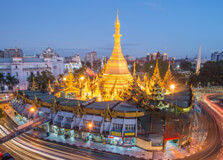
The Sule Pagoda in Yangon, Myanmar, is believed to be over 2,000 years old and holds great historical significance as a place of worship and a symbol of national pride. It is said to enshrine a hair relic of the Buddha, making it a sacred site for Buddhists. Architecture and Design The iconic pagoda stands at the heart of Yangon, with a unique octagonal shape and a golden stupa that glistens in the sunlight. The intricate architecture and design of the pagoda reflect a blend of Burmese and Mon styles, showcasing exquisite craftsmanship and attention to detail. Best Time to Visit The best time to visit Sule Pagoda is during the early morning or late afternoon when the weather is cooler and the crowds are smaller. Avoid visiting during midday when the sun is at its peak, as the heat can be intense. Cultural Significance Sule Pagoda holds immense cultural significance as a symbol of unity and spiritual devotion for the people of Myanmar. It is a place where locals gather to pray, meditate, and participate in religious ceremonies, reinforcing the country's strong Buddhist heritage. Pilgrimage Practices Pilgrims visit Sule Pagoda to offer prayers, light incense, and make offerings to the Buddha. Many believers perform circumambulation around the pagoda, walking clockwise as a form of devotion and reverence. Dress Code and Etiquette Visitors are required to dress modestly when visiting Sule Pagoda, covering their shoulders and knees out of respect for the sacred site. Remove your shoes before entering the pagoda precinct and remember to maintain a peaceful and respectful demeanor while inside. Activities and Experiences Aside from exploring the pagoda's grounds and admiring its architecture, visitors can participate in meditation sessions, attend religious ceremonies, and interact with local worshippers to gain a deeper understanding of Buddhist practices and beliefs. Art and Religious Symbols The interior of Sule Pagoda is adorned with intricate carvings, colorful murals, and gilded statues that depict various Buddhist deities and stories from the scriptures. Each symbol and artwork holds profound spiritual significance and serves as a source of inspiration for worshippers. Local Insights Local residents consider Sule Pagoda to be a spiritual hub and a symbol of hope and resilience in the face of adversity. They view the pagoda as a place of solace and community, where people from all walks of life can come together to seek guidance and peace.
Explore More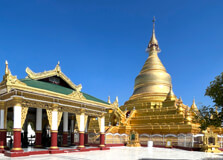
The Kuthodaw Pagoda, located in Mandalay, is known as the "world's largest book" due to its collection of 729 marble slabs inscribed with Buddhist scriptures. The pagoda was built in the 19th century by King Mindon, who wanted to preserve the teachings of Buddha for future generations. History, Architecture, and Design The Kuthodaw Pagoda's construction was completed in 1857 and is a fine example of traditional Burmese architecture. The central stupa is surrounded by hundreds of smaller stupas, each containing a marble slab with Buddhist scriptures engraved on it. The pagoda's design reflects the rich cultural heritage of Myanmar and its devotion to the Buddhist faith. Best Time to Visit The best time to visit the Kuthodaw Pagoda is during the cooler months from November to February when the weather is more pleasant. It is also recommended to visit early in the morning or late in the afternoon to avoid the crowds and enjoy the peaceful atmosphere of the pagoda. Cultural Significance The Kuthodaw Pagoda holds great cultural significance for the people of Myanmar as it is considered one of the most sacred Buddhist sites in the country. It is a place of worship, meditation, and reflection for both locals and pilgrims from around the world. Pilgrimage Practices Pilgrims often visit the Kuthodaw Pagoda to pay their respects to the Buddha and seek spiritual enlightenment. They may recite prayers, make offerings, and perform rituals as part of their pilgrimage practices. The pagoda is a place of spiritual renewal and rejuvenation for those seeking peace and tranquility. Dress Code and Etiquette Visitors to the Kuthodaw Pagoda are expected to dress modestly and respectfully. This means covering shoulders and knees and removing shoes before entering the pagoda grounds. It is important to show respect for the sacredness of the site by following proper etiquette and behaving appropriately while on the premises. Activities and Experiences Visitors to the Kuthodaw Pagoda can explore the complex and admire the intricate details of its architecture. They can also learn about the history and cultural significance of the pagoda through guided tours or by speaking with local guides. Meditating and reflecting on the teachings of Buddha are common activities for visitors seeking spiritual enlightenment. Art and Religious Symbols The Kuthodaw Pagoda is adorned with intricate carvings, paintings, and sculptures that depict scenes from Buddhist scriptures and teachings. The pagoda's architecture incorporates religious symbols such as lotus flowers, Buddha images, and mythical creatures that hold deep spiritual significance for followers of the faith. Local Insights Local residents of Mandalay view the Kuthodaw Pagoda as a symbol of their cultural heritage and religious devotion. They take pride in the pagoda's status as the "world's largest book" and often participate in cultural events and religious ceremonies held at the site. Local insights can provide visitors with a deeper understanding of the significance of the pagoda in Myanmar's history and culture.
Explore More
The Mahamuni Buddha Temple, located in Mandalay, Myanmar, is one of the most revered Buddhist temples in the country. It is home to a sacred Buddha image that is believed to have been cast during the lifetime of Siddhartha Gautama, the historical Buddha. The temple is a significant pilgrimage site for Buddhists and attracts visitors from all over the world who come to pay their respects to the revered Buddha image. History, Architecture, and Design The Mahamuni Buddha Temple was originally built in 1784 by King Bodawpaya of the Konbaung Dynasty. The temple's architecture is typical of Burmese Buddhist temples, with a central stupa surrounded by smaller stupas, prayer halls, and corridors. The most striking feature of the temple is the massive Buddha image, which is covered in layers of gold leaf applied by devotees over the centuries. The image is housed in a chamber adorned with intricate carvings and traditional Burmese design elements. Best Time to Visit The best time to visit the Mahamuni Buddha Temple is during the early morning or late afternoon when the temple is less crowded, and the light is soft and golden, creating a serene atmosphere perfect for meditation and reflection. Cultural Significance The Mahamuni Buddha Temple is considered one of the most important religious sites in Myanmar and is a focal point for Buddhist worship and devotion. The temple plays a vital role in the spiritual and cultural life of the Burmese people and is a symbol of their faith and heritage. Pilgrimage Practices Visitors to the Mahamuni Buddha Temple often participate in traditional Buddhist practices, such as offering flowers, candles, and incense to the Buddha image, as well as chanting prayers and meditating in the temple's peaceful surroundings. Dress Code and Etiquette Visitors to the Mahamuni Buddha Temple are required to dress modestly and respectfully, covering their shoulders and knees. It is also customary to remove shoes before entering the temple and to show reverence by bowing or kneeling in front of the Buddha image. Activities and Experiences Aside from participating in traditional Buddhist rituals, visitors to the Mahamuni Buddha Temple can explore the temple grounds, admire the stunning architecture and carvings, and observe the daily life of the monks who reside in the temple complex. The temple also hosts cultural events and religious ceremonies throughout the year. Art and Religious Symbols The Mahamuni Buddha Temple is adorned with intricate carvings, paintings, and sculptures that depict scenes from Buddhist mythology and teachings. The temple's architecture and design elements serve as symbolic representations of Buddhist beliefs and principles, providing visitors with a deeper understanding of the religion. Local Insights Visiting the Mahamuni Buddha Temple provides visitors with a unique opportunity to immerse themselves in Burmese culture and spiritual traditions. Interacting with local worshippers and monks can offer valuable insights into the daily practices and beliefs of the Burmese people, making the experience more enriching and meaningful.
Explore More
Atumashi Monastery, located in Mandalay, Myanmar, holds a rich history dating back to the late 1800s. The monastery was built by King Mindon, who also constructed the nearby Shwenandaw Monastery. The architecture of Atumashi Monastery is impressive, with intricate carvings, ornate decorations, and a grand prayer hall. The design features traditional Burmese elements, showcasing the country's unique architectural style. Best Time to Visit The best time to visit Atumashi Monastery is during the dry season, which runs from November to February. The weather during this time is cool and pleasant, making it ideal for exploring the monastery and its surroundings. Cultural Significance Atumashi Monastery holds great cultural significance in Myanmar as a place of worship and meditation. It is a popular destination for both locals and tourists seeking spiritual enlightenment and connection with the country's rich religious heritage. Pilgrimage Practices Pilgrims from all over Myanmar visit Atumashi Monastery to pay their respects and seek blessings from the monks. The monastery serves as a sacred space for meditation and reflection, making it an important site for spiritual journeys. Dress Code and Etiquette Visitors to Atumashi Monastery are required to dress modestly and remove their shoes before entering the prayer hall. It is important to show respect for the monks and the sacred space by following the dress code and practicing proper etiquette during your visit. Activities and Experiences Visitors to Atumashi Monastery can participate in guided tours, meditation sessions, and cultural workshops to learn more about the religious practices and traditions of Myanmar. The serene atmosphere of the monastery provides a peaceful setting for reflection and spiritual growth. Art and Religious Symbols The monastery is adorned with intricate artwork and religious symbols that reflect the teachings of Buddhism. From colorful murals to golden statues, Atumashi Monastery offers a glimpse into the spiritual world of Myanmar and the beliefs of its people. Local Insights Local residents often visit Atumashi Monastery to seek guidance from the monks and participate in religious ceremonies. By interacting with the community and learning from their experiences, visitors can gain a deeper understanding of Myanmar's cultural and spiritual traditions.
Explore More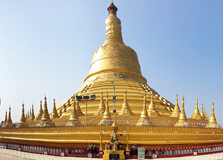
Shwemawdaw Paya, located in Bago, Myanmar, is one of the most iconic Buddhist pagodas in the country. With a history dating back over a thousand years, this pagoda has withstood the test of time and witnessed the rise and fall of various dynasties. It is said to have been originally built by the Mon people, but was later expanded and renovated by various kings throughout the centuries. Architecture and Design The pagoda's striking design features a stupa that reaches a height of over 375 feet, making it the tallest pagoda in Myanmar. Its golden spire glistens in the sunlight and is adorned with intricate carvings and decorations. The pagoda is surrounded by smaller shrines and pavilions, creating a serene and spiritually charged atmosphere for visitors. Best Time to Visit The best time to visit Shwemawdaw Paya is during the dry season, which runs from November to February. The weather is cooler and more pleasant during this time, making it ideal for exploring the pagoda and its surroundings. Additionally, many festivals and ceremonies take place during these months, adding to the vibrant atmosphere of the place. Cultural Significance Shwemawdaw Paya holds immense cultural significance for the people of Myanmar. It is considered a sacred site and a place of worship for Buddhists, who come from far and wide to pay their respects and make offerings at the pagoda. The pagoda also plays a role in local festivals and ceremonies, adding to its cultural importance. Pilgrimage Practices Many Buddhists undertake pilgrimages to Shwemawdaw Paya as part of their spiritual journey. Pilgrims often walk in a clockwise direction around the pagoda, reciting prayers and making offerings as they go. It is believed that these practices bring merit and blessings to those who participate in them, making the pilgrimage a deeply meaningful experience. Dress Code and Etiquette Visitors to Shwemawdaw Paya are expected to dress modestly and respectfully, covering their shoulders and knees. It is also customary to remove shoes before entering the pagoda grounds, as a sign of respect for the sacred site. Visitors should also be mindful of their behavior and avoid loud or disruptive conduct while on the premises. Activities and Experiences Visitors to Shwemawdaw Paya can engage in a variety of activities and experiences during their visit. They can explore the pagoda's intricate architecture, take part in meditation sessions, or join in on religious ceremonies. Additionally, the pagoda's surroundings offer opportunities for peaceful walks and contemplation, making it a serene and spiritually uplifting destination. Art and Religious Symbols The pagoda is adorned with various religious symbols and artworks that hold deep significance for Buddhist practitioners. Intricate carvings, statues of Buddha, and elaborate decorations can be found throughout the pagoda, adding to its beauty and spiritual aura. These artworks serve as reminders of the Buddhist teachings and inspire devotion among visitors. Local Insights Local residents and monks play a vital role in maintaining the spiritual and cultural traditions of Shwemawdaw Paya. They offer insights into the history and significance of the pagoda, as well as guidance on proper etiquette and practices for visitors. Engaging with locals can provide visitors with a deeper understanding of the pagoda's place in Myanmar's cultural and religious landscape.
Explore More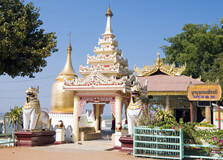
The Bupaya Pagoda in Bagan, Myanmar, dates back to the 9th century when it was originally built by the Pyu people. However, the pagoda has been reconstructed several times over the centuries due to natural disasters such as earthquakes. Its unique bell-shaped design and strategic location along the banks of the Irrawaddy River make it a popular destination for both locals and tourists. Architecture and Design The Bupaya Pagoda is characterized by its cylindrical shape and gilded exterior, giving it a shimmering appearance in the sunlight. The pagoda stands on a square base, with a pointed spire reaching towards the sky. Visitors can climb to the top of the pagoda for panoramic views of the surrounding area, including the river and nearby temples. Best Time to Visit The best time to visit the Bupaya Pagoda is during the dry season from November to February when the weather is cooler and more comfortable for exploring the pagoda and its surroundings. The early morning and late afternoon are ideal times to visit to avoid the crowds and witness the pagoda's golden glow as the sun sets over the river. Cultural Significance The Bupaya Pagoda holds great cultural significance for the people of Myanmar, who believe it houses relics of the Buddha. Pilgrims come from far and wide to pay their respects and make offerings at the pagoda, seeking blessings for health, prosperity, and happiness. The pagoda is also a symbol of unity and peace among different religious communities in the region. Pilgrimage Practices Visitors to the Bupaya Pagoda are encouraged to participate in traditional pilgrimage practices such as making offerings of flowers, candles, and incense at the shrine. Many pilgrims also circumambulate the pagoda in a clockwise direction, chanting prayers and meditating on the teachings of the Buddha. This practice is believed to bring good luck and spiritual merit to those who participate. Dress Code and Etiquette When visiting the Bupaya Pagoda, it is important to dress modestly and respectfully, covering shoulders and knees out of respect for the religious site. Visitors should remove shoes before entering the pagoda grounds and refrain from loud or disruptive behavior to maintain the peaceful atmosphere of the sacred space. Photography is allowed but should be done discreetly and without disturbing others. Activities and Experiences Aside from exploring the pagoda itself, visitors to Bupaya can enjoy boat rides on the Irrawaddy River, offering unique views of the pagoda and surrounding temples from the water. Nearby restaurants and cafes provide opportunities to sample local cuisine and relax in a tranquil setting after a day of sightseeing. Cultural performances and festivals are also held at the pagoda throughout the year, showcasing traditional music, dance, and rituals. Art and Religious Symbols The Bupaya Pagoda is adorned with intricate carvings and sculptures depicting scenes from the life of the Buddha and other religious figures. The pagoda's golden spire symbolizes enlightenment and spiritual purity, while its bell shape represents the unity and harmony of all beings. Visitors can admire the craftsmanship of the pagoda's design and appreciate the religious symbolism woven throughout its architecture. Local Insights Local residents in Bagan often visit the Bupaya Pagoda for quiet contemplation and prayer, finding solace in its serene surroundings and spiritual energy. Many families come together to make offerings and attend ceremonies at the pagoda, strengthening their bonds and sharing their faith with future generations. Visitors can gain insight into Myanmar's rich cultural heritage and religious traditions by interacting with locals and participating in the daily rituals that take place at the pagoda.
Explore More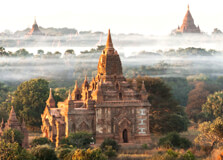
Maha Kalyani Sima, located in Bago, Myanmar, is a significant religious site with a rich history dating back to the ancient times. The architecture and design of the sima are breathtaking, showcasing intricate details and stunning craftsmanship that reflect the spiritual significance of the place. History, Architecture, and Design The Maha Kalyani Sima is a beautiful structure built in the traditional Burmese architectural style, featuring ornate carvings, intricate patterns, and vibrant colors. The sima has a long history, with its origins dating back to ancient times when it was used as a place of worship and meditation by Buddhist monks and practitioners. Best Time to Visit The best time to visit Maha Kalyani Sima is during the dry season, which typically falls between November and February. During this time, the weather is cool and pleasant, making it ideal for exploring the religious site and soaking in its peaceful atmosphere. Cultural Significance Maha Kalyani Sima holds great cultural significance for the people of Myanmar, as it is considered a sacred place of worship and meditation. The sima is also a symbol of the country's rich Buddhist heritage and spiritual traditions, attracting pilgrims and visitors from far and wide. Pilgrimage Practices Pilgrims visiting Maha Kalyani Sima often engage in traditional practices such as offering flowers, incense, and prayers at the altar. Many also participate in chanting and meditation sessions led by Buddhist monks, seeking spiritual guidance and blessings. Dress Code and Etiquette Visitors to Maha Kalyani Sima are expected to dress modestly and respectfully, covering their shoulders and knees when entering the religious site. It is also important to observe silence and show reverence towards the monks and other worshippers present at the sima. Activities and Experiences Visitors to Maha Kalyani Sima can participate in a variety of activities and experiences, including guided tours, meditation sessions, and cultural performances. The sima also hosts religious festivals and ceremonies throughout the year, offering a glimpse into Myanmar's vibrant spiritual traditions. Art and Religious Symbols The interior of Maha Kalyani Sima is adorned with beautiful art and religious symbols that reflect the teachings and beliefs of Buddhism. From intricate frescoes and sculptures to symbolic images and inscriptions, the sima is a treasure trove of spiritual and artistic expression. Local Insights Local residents in Bago often visit Maha Kalyani Sima for spiritual guidance and blessings, seeking solace and inspiration in the peaceful surroundings of the religious site. They also take pride in sharing their cultural heritage and traditions with visitors, offering insights into the significance of the sima in their daily lives.
Explore More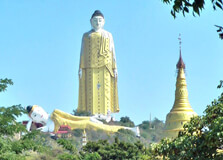
The Maha Bodhi Ta Htaung in Monywa, Myanmar, is a significant Buddhist pilgrimage site known for its collection of thousands of Bodhi trees, some of which are believed to be direct descendants of the original Bodhi tree under which the Buddha attained enlightenment. The site was established in the 1960s by a revered monk named Ashin Ottama, who planted the trees and built pagodas to create a peaceful sanctuary for meditation and reflection. Architecture and Design The architecture of Maha Bodhi Ta Htaung reflects traditional Burmese Buddhist design, with ornate pagodas, statues of Buddha, and intricate carvings adorning the grounds. The serene atmosphere created by the lush Bodhi trees and pristine gardens makes it a popular destination for pilgrims and tourists seeking spiritual solace. Best Time to Visit The best time to visit Maha Bodhi Ta Htaung is during the cooler months of November to February when the weather is mild and pleasant. Avoid the hot and humid summer months as they can be uncomfortable for outdoor activities. Cultural Significance Maha Bodhi Ta Htaung is a place of great cultural significance for Buddhists as it is believed to house relics and artifacts associated with the Buddha himself. The site is revered for its spiritual energy and is considered a sacred space for meditation and prayer. Pilgrimage Practices Pilgrims visiting Maha Bodhi Ta Htaung often perform rituals such as offering flowers, incense, and candles at the sacred sites. Many also walk barefoot around the grounds as a sign of respect and devotion to the Buddha. Dress Code and Etiquette Visitors to Maha Bodhi Ta Htaung are expected to dress modestly and remove their footwear before entering the pagodas and shrines. It is also customary to show respect by refraining from loud noises and photography in certain areas. Activities and Experiences Some of the activities and experiences available at Maha Bodhi Ta Htaung include guided tours of the grounds, meditation sessions led by monks, and attending religious ceremonies. Visitors can also explore the nearby caves and temples for a deeper understanding of Buddhist teachings. Art and Religious Symbols The art and religious symbols found at Maha Bodhi Ta Htaung are a reflection of Buddhist teachings and traditions. Intricate carvings, colorful murals, and statues of Buddha can be seen throughout the site, each with its own unique symbolism and significance. Local Insights Local residents often visit Maha Bodhi Ta Htaung for spiritual guidance and blessings from the monks. They believe that the sacred Bodhi trees radiate positive energy and offer protection to those who seek enlightenment and peace.
Explore More
The Thanboddhay Pagoda, located in Monywa, Myanmar, was built in 1939 by the monk U Po. It is said to house over 580,000 Buddha images, making it one of the most unique and impressive structures in the country. The pagoda was constructed as a symbol of peace and prosperity, and its intricate design reflects the rich cultural heritage of Myanmar. Architecture and Design The Thanboddhay Pagoda features a distinctive design with its multilevel terraces and numerous smaller stupas surrounding the central golden pagoda. The interior walls are adorned with colorful murals depicting scenes from Buddhist scriptures, and the complex is surrounded by lush gardens and statues. Visitors can marvel at the intricate carvings and architectural details that make this pagoda a true work of art. Best Time to Visit The best time to visit the Thanboddhay Pagoda is during the dry season, from November to February, when the weather is cooler and more pleasant. This is also the peak tourist season, so visitors may want to plan ahead and arrive early to avoid crowds. Cultural Significance The Thanboddhay Pagoda is an important religious site for Buddhists in Myanmar, who come to pay their respects and seek blessings. The pagoda's unique design and large collection of Buddha images make it a popular destination for pilgrims and tourists alike, who come to marvel at its beauty and learn about the country's rich cultural heritage. Pilgrimage Practices Visitors to the Thanboddhay Pagoda are encouraged to participate in traditional Buddhist practices, such as offering flowers, incense, and candles at the various shrines and altars. Many pilgrims also walk around the pagoda in a clockwise direction, a practice known as "circumambulation," as a way to show respect and devotion to the Buddha. Dress Code and Etiquette Visitors to the Thanboddhay Pagoda are expected to dress modestly and respectfully, covering their shoulders and knees. It is also customary to remove shoes before entering the pagoda complex. Visitors should refrain from touching the Buddha images and be mindful of their surroundings, maintaining a peaceful and reverent attitude during their visit. Activities and Experiences Visitors to the Thanboddhay Pagoda can participate in a variety of activities and experiences, such as attending Buddhist ceremonies, meditating in the peaceful gardens, and learning about the history and significance of the pagoda from local guides. The pagoda complex also offers opportunities for photography, shopping for religious souvenirs, and enjoying traditional Myanmar cuisine at nearby restaurants. Art and Religious Symbols The Thanboddhay Pagoda is renowned for its exquisite artistry and religious symbolism, with intricate carvings, colorful murals, and ornate statues depicting scenes from Buddhist scriptures. The pagoda's golden dome symbolizes enlightenment and spiritual awakening, while the numerous Buddha images represent peace, compassion, and wisdom. Visitors can explore the pagoda complex to discover the hidden meanings and profound symbolism behind each artistic detail. Local Insights Local residents of Monywa consider the Thanboddhay Pagoda to be a sacred and revered place, where they come to meditate, pray, and seek blessings for themselves and their families. Many locals volunteer their time to help maintain the pagoda complex, cleaning the grounds, making offerings, and assisting visitors with their spiritual practices. Tourists can gain valuable insights into the local culture and traditions by interacting with the friendly and welcoming residents of Monywa during their visit to the Thanboddhay Pagoda.
Explore MoreMyanmar Short And Sweet - 5 Days Tour
5 Days/ 4 Night
Yangon - Bagan
Journeys To The Golden Land
11 Days/ 10 Night
Yangon - Mandalay - Bagan - Kalaw - Pindaya
Shillong and Guwahati 3 star Package for 5 Days
5 Days/ 4 Night
Guwahati - Cherrapunji - Mawlamyaing - Shillong
Meghalaya Tourism 2 Nights - 3 Days
3 Days/ 2 Night
Guwahati - Shillong - Mawlamyaing - Cherrapunji
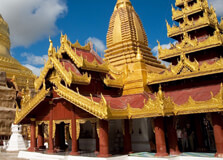
Shwezigon Pagoda in Monywa is one of the most revered and impressive Buddhist temples in the Sagaing Region of Myanmar. Not to be confused with the more famous Shwezigon Pagoda in Bagan, the Monywa version is equally stunning and deeply important to local believers. The pagoda is known for its glittering golden structure, serene atmosphere, and spiritual significance. Surrounded by smaller shrines and statues, Shwezigon Pagoda in Monywa reflects the beauty of traditional Burmese architecture and religious devotion. It serves as a peaceful retreat for both pilgrims and tourists looking to understand the local culture and history of Myanmar. How to Reach Shwezigon Pagoda, Monywa Monywa is located about 136 kilometers northwest of Mandalay, and it can be reached by road within 3-4 hours. From Mandalay, buses, private taxis, or shared vans are commonly available. Alternatively, travelers coming from Bagan can also reach Monywa in about 5-6 hours by road. Once in Monywa, Shwezigon Pagoda is easily accessible within the town area. Taxis, tuk-tuks, or motorbike taxis can be hired to reach the pagoda from any hotel or bus station. The site is well-known among locals, so directions are easy to get. Weather in Monywa Monywa experiences a hot and dry climate for most of the year. The best time to visit is during the cooler months from November to February, when temperatures range between 20°C to 30°C (68°F to 86°F). These months offer pleasant weather for sightseeing. The summer months from March to May can be extremely hot, with temperatures sometimes going over 40°C (104°F). The monsoon season, from June to October, brings heavy rains and high humidity, which may affect travel plans. Timing Shwezigon Pagoda is usually open to visitors every day from early morning until sunset. While there is no strict closing time, most people visit between 6:00 AM and 6:00 PM. Early morning and late afternoon are ideal times to visit, especially to avoid the midday heat. Why is Shwezigon Pagoda, Monywa Famous? The Shwezigon Pagoda in Monywa is famous for its grand golden stupa and religious significance. It is believed to house sacred Buddhist relics and has long served as a center of worship for local people. The gleaming golden architecture and peaceful surroundings make it a highlight of Monywa’s cultural and spiritual landscape. The pagoda is also known for its traditional Burmese design, and its cultural importance makes it a must-visit spot for those exploring central Myanmar. It is often included in local festivals and Buddhist ceremonies, which attract pilgrims from nearby villages and towns. Entry and Visit Details There is no entrance fee for visiting Shwezigon Pagoda in Monywa, although donations are welcomed for temple maintenance. Visitors are expected to dress modestly—shoulders and knees should be covered. Shoes and socks must be removed before entering the main temple area, as per Buddhist tradition. Photography is generally allowed, but visitors should be respectful when taking pictures of monks or locals who are praying. As this is a sacred site, maintaining a quiet and respectful demeanor is important. History and Architecture Shwezigon Pagoda in Monywa was built following the traditional Burmese style of temple construction. While its exact date of construction is not widely documented, it is inspired by the original Shwezigon Pagoda in Bagan, which dates back to the 11th century. The architecture of the Monywa Shwezigon features a large bell-shaped stupa covered in gold leaf. Surrounding the main stupa are smaller stupas, Buddha images, and shrines dedicated to various Buddhist teachings. The design symbolizes Mount Meru, the mythical center of the universe in Buddhist cosmology. Things to Do at Shwezigon Pagoda Walk around the golden stupa and admire its intricate design. Offer prayers and light candles at the various shrines. Take photographs of the pagoda during sunrise or sunset. Observe or participate in local religious ceremonies if visiting during festival times. Explore nearby temples and local markets to experience the culture of Monywa. Facts about Shwezigon Pagoda, Monywa Shwezigon means “Golden Victory” in Burmese. The pagoda is believed to enshrine relics of Gautama Buddha. It serves as a major spiritual center for locals in the Sagaing Region. It is inspired by the famous Shwezigon Pagoda in Bagan but has unique local features. It is especially crowded during full moon days and religious holidays. Tips for Visiting Shwezigon Pagoda, Monywa Visit early in the morning or late afternoon to avoid the heat and crowds. Dress modestly and respectfully as it is a sacred religious site. Carry a small bag to keep your shoes when you go barefoot in the pagoda area. Bring water, sunscreen, and a hat, especially if visiting during hot months. If you’re interested in learning more, consider hiring a local guide. Be respectful when photographing religious statues and people in prayer.
Explore More
Shwe Oo Min Pagoda is a beautiful and culturally significant Buddhist temple located near the town of Pindaya in Shan State, Myanmar. Nestled in the scenic surroundings of Pindaya’s hills, this pagoda complex is a popular destination for both pilgrims and tourists. Known for its peaceful atmosphere and intricate architecture, Shwe Oo Min offers visitors a unique glimpse into Myanmar’s religious heritage and traditional artistry. The pagoda stands out for its golden stupas and detailed carvings, making it a must-visit landmark when exploring the Pindaya region. It complements the nearby Pindaya Caves and Pindaya Lake, providing a holistic cultural and spiritual experience. How to Reach Shwe Oo Min Pagoda To visit Shwe Oo Min Pagoda, travelers generally first reach Pindaya town. The nearest airport is Heho, which receives flights from major cities like Yangon and Mandalay. From Heho Airport, it takes approximately 1.5 hours by car or taxi to reach Pindaya. Upon arriving in Pindaya town, the pagoda is located a short distance away and can be reached easily by taxi, bicycle, or on foot depending on your preference. The roads leading to the pagoda are well-maintained and the journey offers beautiful views of Shan State’s rolling hills. For those traveling overland, buses and private cars are available from nearby cities such as Taunggyi and Kalaw, with routes passing through Pindaya. Weather in Pindaya Pindaya enjoys a mild climate due to its elevation of around 1,100 meters (3,600 feet) above sea level. The best time to visit Shwe Oo Min Pagoda is during the dry season from November to February, when temperatures are cooler and weather conditions are ideal for sightseeing. Daytime temperatures during this season typically range from 15°C to 25°C (59°F to 77°F). The summer months can be warmer, with temperatures rising to around 30°C (86°F). From June to October, the region experiences the monsoon season, which brings heavy rainfall and lush greenery but may cause some inconvenience for travel. Timing Shwe Oo Min Pagoda is open daily to visitors, generally from 8:00 AM to 5:00 PM. It is advisable to visit in the morning or late afternoon to avoid the midday heat and enjoy a more peaceful atmosphere. The lighting during these times also enhances the beauty of the golden stupas and intricate decorations. Why is Shwe Oo Min Pagoda Famous? Shwe Oo Min Pagoda is renowned for its impressive golden stupas and richly decorated temples that reflect the deep spiritual traditions of Myanmar’s Buddhist culture. The pagoda’s tranquil setting amidst lush hills attracts both devout pilgrims and tourists seeking cultural enrichment. Additionally, the pagoda is famous for its connection with the local community and regular religious ceremonies, festivals, and meditation sessions held here. The architecture and craftsmanship of the temple complex also draw admiration from visitors interested in art and history. Entry and Visit Details There is generally no entrance fee to visit Shwe Oo Min Pagoda, as it is a place of worship and open to the public. Visitors are encouraged to dress modestly, covering shoulders and knees, as a mark of respect for the religious site. Shoes must be removed before entering temple buildings. It is also important to behave respectfully by maintaining a quiet demeanor, not touching statues or religious objects, and seeking permission before taking photographs, especially during prayer times. History and Architecture The origins of Shwe Oo Min Pagoda date back several centuries, reflecting the longstanding Buddhist heritage of the Shan State region. The pagoda has been maintained and restored over time by the local community and Buddhist devotees. Architecturally, Shwe Oo Min Pagoda features traditional Burmese Buddhist design, including gilded stupas, ornate carvings, and detailed murals depicting scenes from Buddhist scriptures. The temple complex is a fine example of Shan-style religious architecture, blending local craftsmanship with spiritual symbolism. The pagoda's golden spires can be seen gleaming under the sun, and the interiors boast colorful frescoes and statues of the Buddha in various poses. The peaceful gardens and courtyards add to the overall serene environment. Things to Do at Shwe Oo Min Pagoda Explore the temple complex and admire the golden stupas and intricate artwork. Participate in or observe religious ceremonies and meditation sessions. Take time for quiet reflection in the peaceful gardens and courtyards. Photograph the stunning architecture and surrounding landscapes. Learn about Buddhist traditions and Shan culture from local monks and guides. Combine your visit with nearby attractions such as Pindaya Caves and Pindaya Lake. Facts about Shwe Oo Min Pagoda The pagoda is one of the most important religious sites in the Pindaya region. It features traditional Shan-style Buddhist architecture with gilded stupas and intricate carvings. Regular religious events and festivals are held at the pagoda throughout the year. The pagoda is surrounded by scenic hills, adding to its spiritual ambiance. It is a center for meditation and Buddhist teachings in the local community. Tips for Visiting Shwe Oo Min Pagoda Dress modestly and respectfully, covering shoulders and knees. Remove shoes before entering temple buildings. Visit early in the morning or late afternoon to avoid crowds and heat. Carry water and stay hydrated, especially in warmer months. Respect local customs and practices during religious ceremonies. Ask permission before photographing monks or worshippers. Combine your visit with other nearby sites like Pindaya Caves and Pindaya Lake for a full day of exploration.
Explore More
Htan Kyi Pagoda is a significant Buddhist religious site located near the town of Pindaya in Shan State, Myanmar. Nestled among the serene hills that characterize this region, the pagoda offers a peaceful atmosphere ideal for meditation, reflection, and spiritual exploration. It is one of the many beautiful pagodas in Pindaya that showcases the rich cultural heritage and deep-rooted Buddhist traditions of Myanmar. The pagoda is revered by locals and attracts visitors who wish to experience Myanmar’s spirituality while enjoying the natural beauty of Shan State. It is often visited alongside other attractions in Pindaya such as the famous Pindaya Caves and Pindaya Lake, making it an integral part of the cultural and religious landscape of the area. How to Reach Htan Kyi Pagoda Reaching Htan Kyi Pagoda begins with getting to Pindaya town. The nearest airport to Pindaya is Heho Airport, which is well-connected by domestic flights from major cities such as Yangon and Mandalay. From Heho, it takes about 1.5 hours by car or taxi to arrive in Pindaya. Upon reaching Pindaya town, visitors can access Htan Kyi Pagoda by local taxis, motorbike rentals, or even on foot depending on one’s preference and the exact location of the pagoda relative to town. The roads leading to the pagoda are generally in good condition, with scenic views of Shan State’s characteristic rolling hills and lush greenery. For travelers coming overland, buses and private vehicles travel regularly between Pindaya and nearby cities such as Taunggyi and Kalaw, providing easy access to the region. Weather in Pindaya Pindaya enjoys a mild climate due to its elevated position at roughly 1,100 meters (about 3,600 feet) above sea level. The best time to visit Htan Kyi Pagoda is during the dry season, which spans from November to February. This period offers comfortable temperatures, generally between 15°C and 25°C (59°F to 77°F), ideal for sightseeing and outdoor activities. Summers from March to May can become warmer, with temperatures occasionally reaching up to 30°C (86°F). The rainy season lasts from June through October, bringing heavy rainfall and lush, green landscapes but sometimes making travel more challenging due to wet roads and muddy paths. Timing Htan Kyi Pagoda is open every day for visitors and worshippers alike, generally from 8:00 AM to 5:00 PM. It is recommended to visit early in the morning or late in the afternoon to enjoy cooler temperatures and a quieter atmosphere, allowing for a more reflective and peaceful experience. Why is Htan Kyi Pagoda Famous? Htan Kyi Pagoda is famous for its tranquil environment, religious significance, and its embodiment of traditional Burmese Buddhist architecture. The pagoda is an important spiritual site for the local Buddhist community and attracts pilgrims year-round. The pagoda is also well known for its picturesque setting amidst the scenic Shan hills, providing visitors with a blend of spiritual solace and natural beauty. Its peaceful atmosphere invites meditation and contemplation, making it a highlight for those exploring the spiritual heritage of Pindaya. Entry and Visit Details There is typically no entrance fee to visit Htan Kyi Pagoda, as it is a place of worship open to the public. Visitors should dress modestly, covering shoulders and knees as a sign of respect for the sacred site. It is customary to remove shoes before entering the pagoda grounds and the temple buildings themselves. Visitors are encouraged to maintain silence and behave respectfully to preserve the sanctity of the site. Photography is usually allowed in outdoor areas but should be done with consideration, especially around worshippers and monks. History and Architecture Htan Kyi Pagoda is steeped in Myanmar’s Buddhist traditions and reflects centuries of religious devotion in the Shan State. While the exact date of its construction is not widely documented, the pagoda represents classic Burmese temple architecture. Architecturally, Htan Kyi Pagoda features a traditional gilded stupa that gleams under the sun, surrounded by smaller shrines and prayer halls. The structure is decorated with intricate carvings and religious motifs, symbolizing various aspects of Buddhist teachings. The pagoda is a fine example of the Shan style, incorporating elegant spires, tiered roofs, and detailed artwork that honor Buddhist principles. The surrounding grounds are often landscaped with gardens and pathways to enhance the spiritual experience of visitors. Things to Do at Htan Kyi Pagoda Explore the pagoda complex, taking time to admire the architecture and religious artwork. Participate in prayer sessions or meditation to connect with the spiritual atmosphere. Walk around the peaceful gardens and enjoy the natural beauty surrounding the pagoda. Observe or engage with monks and locals to learn more about Buddhist practices. Take photos of the stunning gilded stupa and panoramic hill views. Combine your visit with nearby attractions such as Pindaya Caves and Pindaya Lake for a comprehensive experience. Facts about Htan Kyi Pagoda Htan Kyi Pagoda is an important religious site for the Shan Buddhist community. The pagoda features traditional Shan-style architecture with gilded stupas and intricate carvings. The surrounding environment offers a serene setting, ideal for meditation and reflection. The pagoda is accessible year-round but is best visited during the dry season. It serves as a hub for local festivals and religious ceremonies. Tips for Visiting Htan Kyi Pagoda Wear modest clothing that covers shoulders and knees to show respect. Remove your shoes before entering temple buildings. Visit early in the day or late afternoon to avoid crowds and the midday heat. Carry water and stay hydrated, especially during warmer months. Be respectful of local customs and traditions during religious activities. Ask for permission before photographing monks or worshippers. Consider combining your visit with other Pindaya attractions to make the most of your trip.
Explore More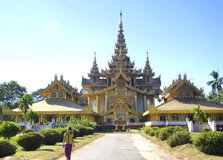
Sutaungpyei Pagoda is a revered Buddhist temple located in Pindaya, Shan State, Myanmar. It stands as a remarkable religious site that attracts pilgrims and tourists alike, drawn by its spiritual significance and striking architecture. The pagoda is perched on a hill, offering visitors a panoramic view of the beautiful town of Pindaya and the surrounding Shan hills. Known for its serene atmosphere and historic importance, Sutaungpyei Pagoda is an essential stop for those exploring the cultural heritage of Myanmar. The name "Sutaungpyei" roughly translates to "Wish-fulfilling Mountain," symbolizing the deep spiritual hope and faith visitors place in this sacred place. It reflects the Buddhist ideals of enlightenment, peace, and fulfillment. How to Reach Sutaungpyei Pagoda To visit Sutaungpyei Pagoda, travelers generally first arrive in Pindaya town, which is accessible from Heho Airport — the nearest airport to Pindaya. Heho Airport connects with Myanmar’s major cities such as Yangon and Mandalay by regular domestic flights. From Heho, the journey to Pindaya takes about 1.5 hours by car or taxi. Once in Pindaya, reaching the pagoda is relatively easy. Visitors can take a taxi or hire a motorbike to reach the base of the hill where the pagoda is located. For those who enjoy walking, it’s possible to hike up the well-maintained paths that lead to the temple, which is surrounded by lush greenery and offers an immersive experience of the local environment. Overland travelers can also reach Pindaya by bus or car from nearby towns such as Taunggyi or Kalaw, after which local transport can be arranged to the pagoda. Weather in Pindaya Pindaya enjoys a mild and pleasant climate, thanks to its elevated location in the Shan Hills at around 1,100 meters (3,600 feet) above sea level. The best time to visit Sutaungpyei Pagoda is during the dry season, from November to February, when the weather is cool and comfortable. During this time, temperatures typically range between 15°C and 25°C (59°F to 77°F), ideal for exploring the pagoda and hiking nearby trails. The warmer months from March to May can reach up to 30°C (86°F), while the rainy season from June to October brings frequent showers and lush greenery, although it can make travel more challenging. Timing Sutaungpyei Pagoda is generally open to visitors every day from early morning until late afternoon, typically between 8:00 AM and 5:00 PM. To fully appreciate the peaceful atmosphere and avoid the midday heat, it is recommended to visit either early in the morning or later in the afternoon. Why is Sutaungpyei Pagoda Famous? Sutaungpyei Pagoda is famous for several reasons. First, it is a significant pilgrimage site for Buddhists who come to pray, meditate, and seek spiritual blessings. The pagoda is also renowned for its spectacular location atop a hill, which offers breathtaking views of Pindaya and the surrounding hills. Architecturally, the pagoda is a fine example of traditional Burmese religious construction, featuring elegant stupas, intricate carvings, and beautifully gilded surfaces. Its serene environment combined with cultural richness makes it a highlight for both spiritual visitors and tourists. Entry and Visit Details There is usually no entrance fee to access Sutaungpyei Pagoda itself, as it is primarily a place of worship. Visitors should dress modestly, covering shoulders and knees, as a sign of respect for the religious site. Removing shoes before entering the pagoda compound is also customary. Visitors are encouraged to maintain quiet and respectful behavior, especially during prayer times. Photography is generally allowed, but it’s important to ask permission before taking pictures of monks or worshippers. History and Architecture The exact date of construction of Sutaungpyei Pagoda is not well documented, but it is believed to have been built several centuries ago during the height of Burmese Buddhist architectural development. The pagoda’s design is characteristic of the Shan style, with a central gilded stupa surrounded by smaller shrines and prayer halls. The structure is adorned with delicate carvings and religious motifs depicting stories from Buddhist scriptures. The pagoda complex is designed to provide spaces for worship, meditation, and community gatherings, reflecting the deep integration of religion and daily life in Myanmar. Things to Do at Sutaungpyei Pagoda Explore the pagoda complex and admire the beautiful religious architecture and intricate artwork. Enjoy panoramic views of Pindaya town and the surrounding Shan hills from the hilltop location. Participate in meditation or prayer sessions to experience the spiritual ambiance. Walk the peaceful trails around the pagoda to connect with nature and find quiet spots for reflection. Learn about Buddhist traditions and local customs by interacting with monks and locals. Visit nearby attractions such as Pindaya Caves and Pindaya Lake for a fuller cultural experience. Facts about Sutaungpyei Pagoda The name “Sutaungpyei” means “Wish-fulfilling Mountain,” symbolizing hope and spiritual aspiration. The pagoda is perched on a hill, offering spectacular views of the surrounding countryside. It is a significant pilgrimage site for Buddhists in Shan State and beyond. The architecture showcases traditional Shan and Burmese Buddhist styles. The site is surrounded by nature, with several walking paths and meditation spots nearby. Tips for Visiting Sutaungpyei Pagoda Wear modest clothing covering your shoulders and knees to respect local customs. Remove your shoes before entering the pagoda grounds. Visit early in the morning or late afternoon to avoid crowds and enjoy cooler weather. Carry water and sun protection, especially if you plan to hike around the area. Be respectful and quiet, particularly during religious ceremonies or meditation times. Ask permission before taking photos of monks or worshippers. Consider hiring a local guide to learn more about the history and cultural significance.
Explore More